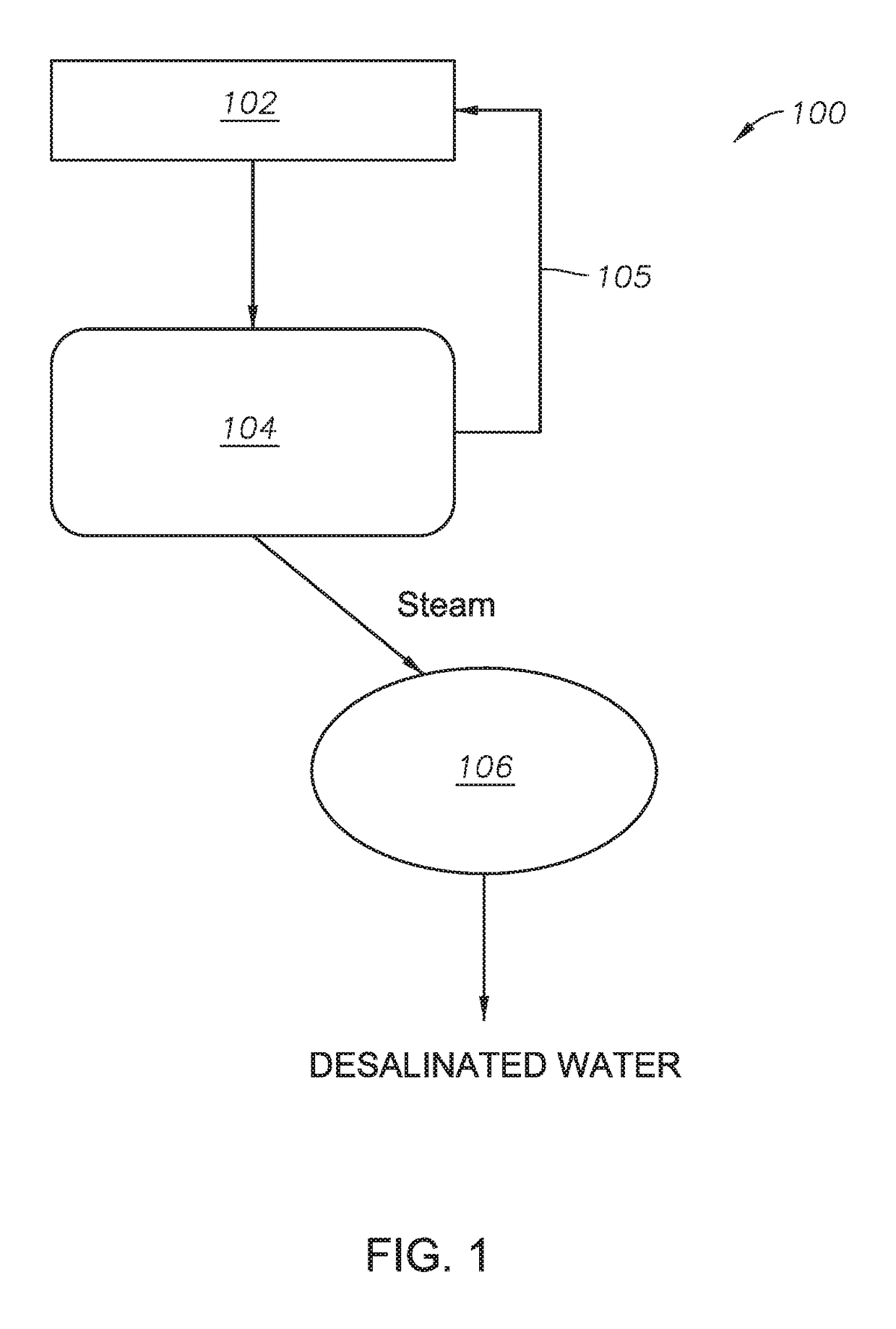Coupling photovoltaic and concentrated solar power technologies for desalination
a technology of concentrated solar power and photovoltaic, which is applied in the direction of photovoltaics, lighting and heating apparatus, electrical apparatus, etc., can solve the problems of large thermal and electrical power consumption of msf for pumping, prior art systems and methods lack independence from electrical grid connection, and energy-intensive desalination technologies
- Summary
- Abstract
- Description
- Claims
- Application Information
AI Technical Summary
Benefits of technology
Problems solved by technology
Method used
Image
Examples
Embodiment Construction
[0031]So that the manner in which the features and advantages of the embodiments of systems and methods for using combined PV and CSP technology for salt water desalination and transport, as well as others, which will become apparent, may be understood in more detail, a more particular description of the embodiments of the present disclosure briefly summarized previously may be had by reference to the embodiments thereof, which are illustrated in the appended drawings, which form a part of this specification. It is to be noted, however, that the drawings illustrate only various embodiments of the disclosure and are therefore not to be considered limiting of the present disclosure's scope, as it may include other effective embodiments as well.
[0032]Referring now to FIG. 1, a process schematic is shown for producing desalinated water in one embodiment of the present disclosure. In combined CSP desalination system 100, a solar trough field 102 concentrates solar energy into a heat tran...
PUM
| Property | Measurement | Unit |
|---|---|---|
| pressure | aaaaa | aaaaa |
| temperature | aaaaa | aaaaa |
| pressure | aaaaa | aaaaa |
Abstract
Description
Claims
Application Information
 Login to View More
Login to View More - R&D
- Intellectual Property
- Life Sciences
- Materials
- Tech Scout
- Unparalleled Data Quality
- Higher Quality Content
- 60% Fewer Hallucinations
Browse by: Latest US Patents, China's latest patents, Technical Efficacy Thesaurus, Application Domain, Technology Topic, Popular Technical Reports.
© 2025 PatSnap. All rights reserved.Legal|Privacy policy|Modern Slavery Act Transparency Statement|Sitemap|About US| Contact US: help@patsnap.com



